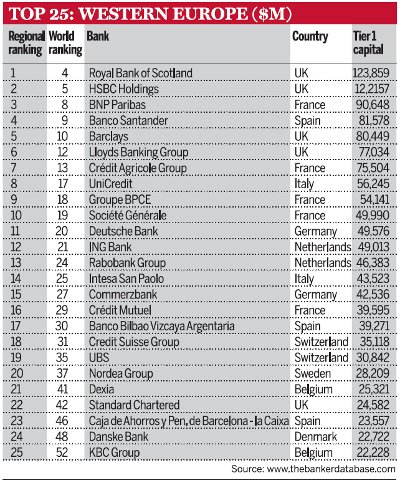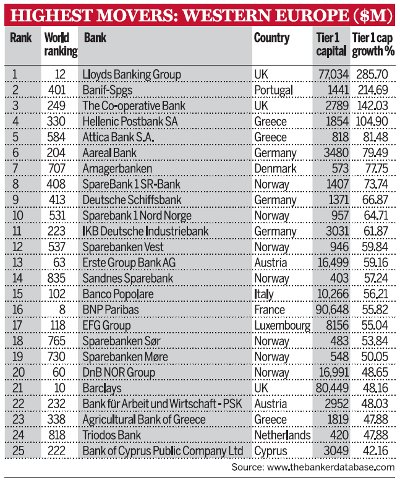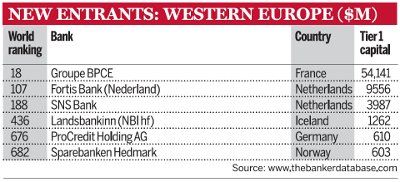Last year, the financial crisis had little impact on the top 25 western European banks.
This year, there are the first signs that the ultimate winners and losers from the crisis will lead to some reconfiguration of the European banking scene, albeit at a glacial pace. France's Crédit Agricole slides out of the top three for the first time to be replaced by BNP Paribas. Not only has BNP Paribas increased its Tier 1 capital by 55.8% as it absorbs parts of the Fortis group, but a small 2.6% rise in its assets now makes it the largest bank in the world by assets.
That small change in assets propels it to the top position because most other major banks are in the grip of a fierce deleveraging process, gradually reducing book sizes to restore capital adequacy and curb risks. Of the top 25 western European banks, 11 saw decreases in assets in this year's rankings, with UBS and Deutsche Bank the most dramatic at 31% and 29%, respectively.
The changes in assets contrast with the relative stability of the rankings by capital. There are no true departures from this year's Top 25 and no truly new arrivals in the rankings: the UK's HBOS disappears as it is absorbed into Lloyds Group to create the sixth largest European bank, while the merger between Groupe Banques Populaires and Groupe Caisse d'Epargne leads the resulting entity, Group BPCE, to move to ninth in Europe. And the broken-up Fortis is also removed.
The process of shedding assets and raising capital has inevitably led to a sharp strengthening in the region's capital adequacy ratios. The aggregate capital-to-asset ratio in the Top 25 western European banks has increased by almost a full percentage point, to 3.87% from 2.92%. And profitability has been spectacularly restored, with an aggregate profit of $97.96bn erasing last year's $62.04bn aggregate loss.
However, return on assets, although back into positive territory, is still painfully low, at just 0.29% on average. This is not just the responsibility of the seven banks still reporting losses (down from 10 last year). Even the profitable banks are hardly earning dramatic margins: Standard Chartered tops this list, at just 1.18%.
And the increased capitalisation has inevitably dragged on return on equity as well. Profit on average capital is at 8% for the Top 25 banks and even excluding the two outliers (Commerzbank and KBC both recorded losses on capital of almost 20%) only raises this ratio to 10.6%. European banks are stronger, but recovery still has some way to go.





